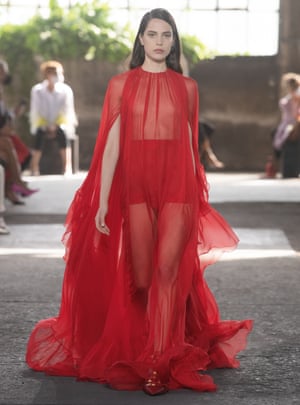Bridget Jones’s Diary introduced us to many things about mid-90s British culture. Smug marrieds. The Hay diet. A “ladette” mindset in which women don’t have sex, they “shag”. Yet 25 years after it was first published – and in a neat, Valentine’s Day twist – it’s the “giant mummy pants” that have endured.
A recent reissue of the novel features about 60 pairs, drawn in gold, on its cover. The original featured a woman staring sadly out of a window. It’s a playful redesign, but 25 years on, one that reduces this fairytale of middle-class post-feminism to her underwear. Because what the alphabet is to the English language, Bridget Jones is to large knickers.

Now it’s taken a global pandemic – and the fact that we are all spending Valentine’s Day at home – to get more British people thinking like Bridget. The size of our knickers waxes and wanes, but lately they have waxed. The global shopping platform Lyst noted that searches for “comfy” and “high-waisted” underwear went up 46% in December, while searches for “full briefs” on the M&S website have risen in lockdown. Agent Provocateur, which does what it says on the box, has had a 35% increase of sales in high-waisted knickers over the last six months.
At the higher end of things, brands (and celebrities) that championed a sort of luxe inclusivity, such as Kim Kardashian West’s Skims or Rihanna’s now-closed Fenty line, capitalised on the cultural, then fiscal, demise of Victoria’s Secret’s low-slung barely there thongs with large, tight, even-textured knickers that not only accentuated hips and bums, but demanded them.
Before Bridget Jones, no one had really heard of control pants. That’s not to say they didn’t exist. Modern shapewear – the tummy-tucking underwear designed to bequeath its wearer an android-like smoothness – has been available on the high street since the early 90s. But it wasn’t until 2000 that Spanx launched its Footless Pantyhose, the gold standard of modern shapewear – in effect a pair of control tights with the legs scissored off. These paved the way for Power Panties, a compact version of the same thing, which would become the most pervasive item of clothing on the red carpet.

Now, of course, large, tummy-sucking pants are worn by everyone from Jacinda Arden (two pairs at once) to Robert De Niro in The Irishman and every Kardashian, Jenner or Karen in between. It may even explain why some celebrities’ knickers have migrated outside without cause for alarm. Memorable examples include Lady Gaga at the Met Gala in 2019, Davina McCall on The Masked Singer and several models in the Valentino spring/summer 2021 show whose (large) pants were visible beneath a sheer dress. It’s unlikely these were Spanx, but frankly, what’s the difference? A large pair of knickers by any other name would loom just as large.
Serena Rees founded Agent Provocateur in 1994, two years before the book came out. The brand is known for selling consciously anachronistic undergarments, yet aside from the odd event that “needs” a thing, Rees has always leant towards a bigger shape: “My history of a being a big knicker fan started back in my club days when we would go out in a fab big knicker with a fishnet and a great sweater (great vintage finds), when I was working for Vivienne Westwood in the early 90s,” she says. Rees maintains that Agent Provocateur was always supposed to be about “cool big knickers”. Launching her new brand, Les Girls Les Boys, she focused on big knickers there too, albeit ones with a comparatively gender-neutral cut. The shift paid off – in 2020, sales went up 400% year on year. “It was a reflection on changing times,” she says, “but I was also guided by the next generation’s way of thinking.”
The purpose of underwear – known as “drawers” when they became the norm in the 19th century – was to be hygienic, warm, and modest. But it was also about silhouette, says the fashion historian Susanna Cordner, who worked on the V&A’s Undressed: a Brief History of Underwear. “The difference between the structural garments of the past and the shapewear we buy today is that there was an understanding in the case of, say, a Victorian woman in a bell-shaped silhouette, that hidden elements like corsets and crinolines were used to achieve that figure,” she says. You couldn’t see the drawers, but you knew they were there. The resurgence of big knickers “could be seen as the wearer prioritising their own experience over external pressures,” she says.
It was not the book but the 2001 film adaptation starring Renée Zellweger that put the oversized, comically unsexy knickers front and centre. As ever in marketing, it’s the image that counts, and the image that has stuck to Bridget Jones is big pants. The boring truth is always less appealing than the pop culture myth. Still this shapewear-related update not only recognised that some women wore them, but that many were even getting laid in them.
